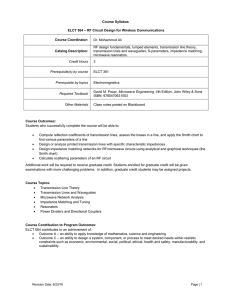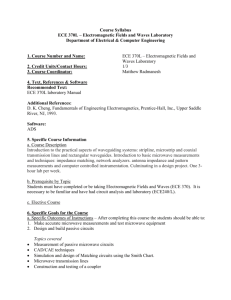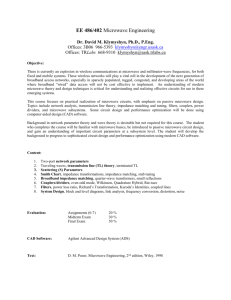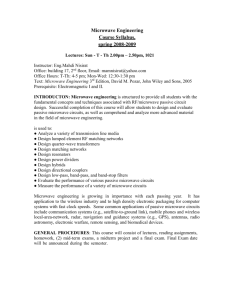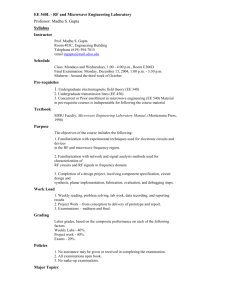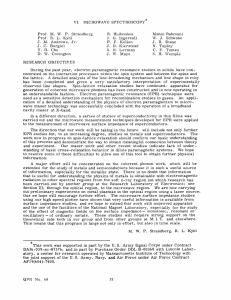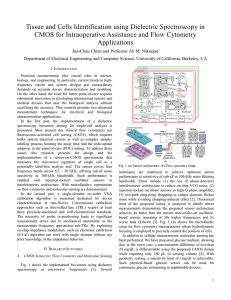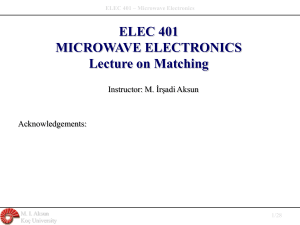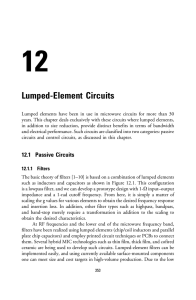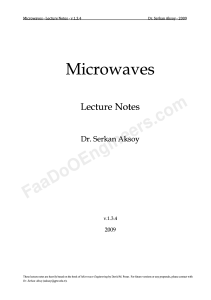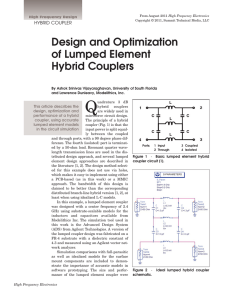ELCT 564 - RF Circuit Design for Wireless Communications
advertisement
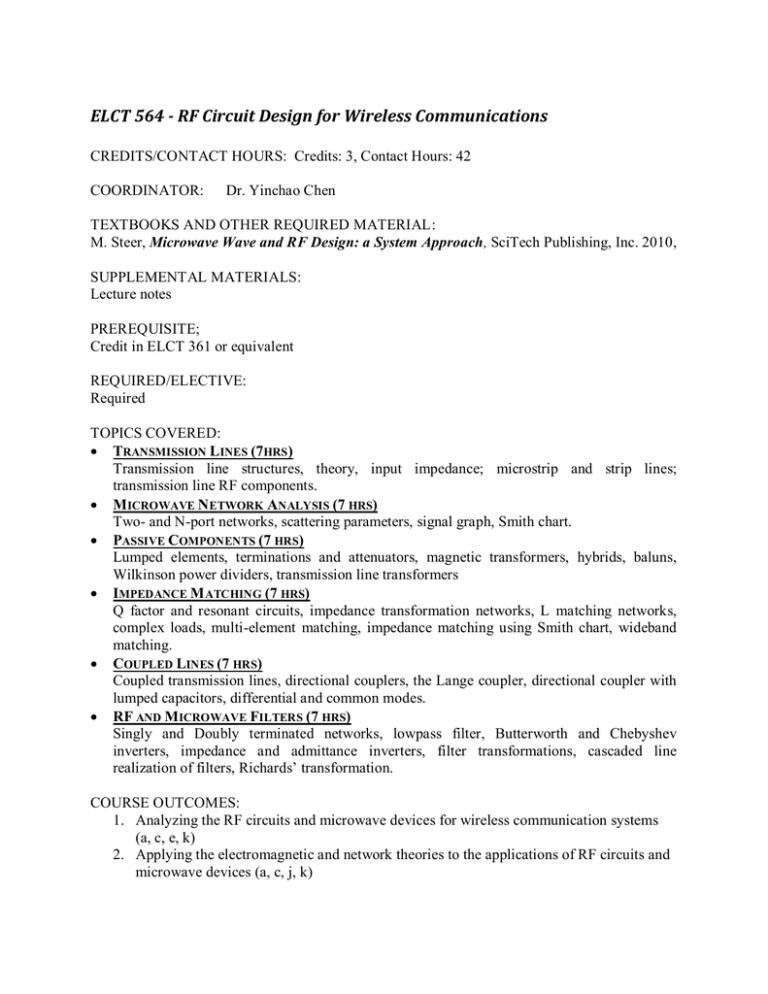
ELCT 564 - RF Circuit Design for Wireless Communications CREDITS/CONTACT HOURS: Credits: 3, Contact Hours: 42 COORDINATOR: Dr. Yinchao Chen TEXTBOOKS AND OTHER REQUIRED MATERIAL: M. Steer, Microwave Wave and RF Design: a System Approach, SciTech Publishing, Inc. 2010, SUPPLEMENTAL MATERIALS: Lecture notes PREREQUISITE; Credit in ELCT 361 or equivalent REQUIRED/ELECTIVE: Required TOPICS COVERED: TRANSMISSION LINES (7HRS) Transmission line structures, theory, input impedance; microstrip and strip lines; transmission line RF components. MICROWAVE N ETWORK ANALYSIS (7 HRS) Two- and N-port networks, scattering parameters, signal graph, Smith chart. PASSIVE COMPONENTS (7 HRS) Lumped elements, terminations and attenuators, magnetic transformers, hybrids, baluns, Wilkinson power dividers, transmission line transformers IMPEDANCE M ATCHING (7 HRS) Q factor and resonant circuits, impedance transformation networks, L matching networks, complex loads, multi-element matching, impedance matching using Smith chart, wideband matching. COUPLED LINES (7 HRS) Coupled transmission lines, directional couplers, the Lange coupler, directional coupler with lumped capacitors, differential and common modes. RF AND MICROWAVE FILTERS (7 HRS) Singly and Doubly terminated networks, lowpass filter, Butterworth and Chebyshev inverters, impedance and admittance inverters, filter transformations, cascaded line realization of filters, Richards’ transformation. COURSE OUTCOMES: 1. Analyzing the RF circuits and microwave devices for wireless communication systems (a, c, e, k) 2. Applying the electromagnetic and network theories to the applications of RF circuits and microwave devices (a, c, j, k) 3. Designing RF circuits and microwave devices using the concepts of both the lumped elements and distributed structures; (a, b, c, d, e, i, j, k) 4. Learning and being familiar with the dominant RF design software tools used in the wireless RF industries (b, c, d, e, i, k) Relation of course outcomes to program outcomes H = major importance, M = moderate importance, L = minor importance, blank indicates no relation Program Outcomes an ability to apply knowledge of math, science and eng. (a) an ability to design and conduct experiments, as well as to analyze and interpret data (b) an ability to design a system, component, or process to meet desired needs within realistic constraints such as economic, environmental, social, political, ethical, health and safety, manufacturability, and sustainability (c) an ability to function on multidisciplinary teams (d) an ability to identify, formulate, and solve engineering problems (e) a recognition of the need for, and an ability to engage in life-long learning (i) a knowledge of contemporary issues (j) an ability to use the techniques, skills, and modern eng. tool necessary (k) ASSESSMENT METHODS: Undergraduate Homework Mid-term Test Final Exam Total 20% 40% 40% 100% 1 H Course Outcomes 2 3 4 H H H H M Graduate Homework Project Mid-term Test Final Exam Total H H M M H H M H M M M M M M H 20% 10% 35% 35% 100% H
